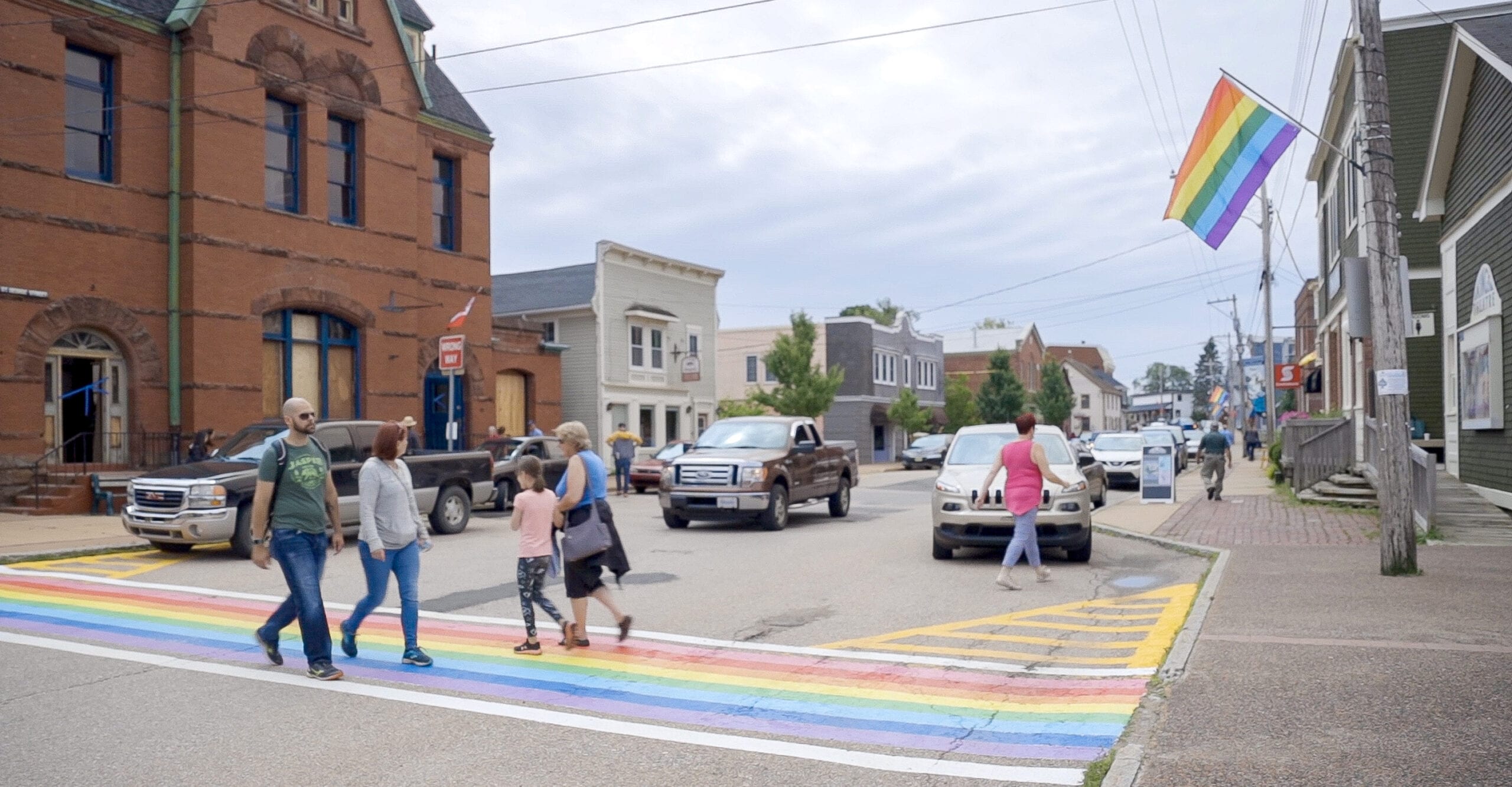Pride looks different this year. In response to public health guidelines, LGBTQ2 communities around the world are giving up the usual crowded parties, protests and elaborate parades in favour of online events and distanced gatherings.
But in many places, Pride celebrations have always been small. Over the past year, Xtra’s video team has been visiting Pride events in small towns across Canada for an upcoming documentary to see how people celebrate their identities and fight to build more inclusive, positive local communities.
This year, without big gatherings, conversations continue about how we should mark Pride and what it could look like without the lavish floats and corporate presence. We wanted to see what people everywhere can learn from some of the smallest Pride events around.
When you take away the millions of dollars in sponsorships, the packed parties and parades, what’s at the heart of Pride?
Here’s some of what we’ve learned.
Taber, Alberta
Whether your parade is big or small, showing up is what matters, says Jayce Wilson. She’s one of the Pride organizers in Taber, a town of about 8,500 in Southern Alberta, surrounded by corn fields and open skies.
Seeing a few hundred people turn out for the town’s first Pride in 2017 was amazing, she says.
“Before Pride, I figured there was maybe just a handful of us. Like a couple dozen total, but to see 300 people show up, or 200 people show up, it shows that there’s a lot of support for us here,” she says. “It made me realize that the queer community here in Taber is a lot bigger than we realize.”
Growing up in a small, deeply religious community, Wilson says she never learned the words to describe her identity. And outside of her close group of friends and allies, she still sometimes feels unwelcome.
She loves Southern Alberta: The prairies, the sunsets, the big sky. But at times she has considered leaving. She stays because she feels the community needs advocates to fight, so that younger LGBTQ2 people don’t have to face the same choice.
“If we don’t stand up, who else is?” she says.
Annapolis Royal, Nova Scotia
In Annapolis Royal, Nova Scotia, Zeynep Tonak says her hometown has never felt unwelcoming, but being LGBTQ2 is still “something that people just don’t really talk about.” There is an unwritten “don’t ask, don’t tell” rule, she says.
Officially the smallest town in Nova Scotia, the community of about 500 people has long been a home for artists and retirees.
As idyllic as it seems, such a small community comes with its own challenges. Taking time to figure things out and coming out on your own terms was almost impossible, says Tonak, who is one of Annapolis Royal’s Pride organizers.
“You told a couple of your friends and then the other 16 people in your class knew about it and then the whole school would know,” she says.
And while outright homophobia wasn’t something she saw often, queerness was rarely talked about in the community.
In a city like Halifax, where she now attends university, it’s possible to go to Pride and fade into the crowd, or to take off your glitter on the ride home, she says. “The anonymity of Pride in a big city is comforting for a lot of people,” she says. “I think in a small town the best and worst part is that you can’t do that.”
She sees Pride as a way to move from tolerance to acceptance. “That’s something that has been really stressful for a lot of youth but also for people that are older and LGBTQ … This place, that is so gorgeous and so quaint and so artsy, is this also a place where I feel love and acceptance and allyship?” she asks. “I just want people to feel validated, that everything might not be peachy-keen, but there is that effort.”
Norman Wells, Northwest Territories
In her hometown of Norman Wells, Northwest Territories, Ava Pope has seen that same kind of positive change since her high school’s Gender and Sexuality Alliance (GSA) started Pride in 2015—which was until recently the northernmost Pride in Canada.
A 300-kilometre-long stretch of ice road connects the community of about 800 to the nearest town in the winter, but for most of the year the only way in is by air or by boat up the Mackenzie River.
The GSA in Pope’s school has been a lifeline for many students who feel like they can’t talk to their families or friends.
“I think that’s so important, especially in a small town, because we don’t have as many resources or people or anything as other places,” she says. “It’s not like you can have friends from another school or go somewhere else, because this is it. This is what we have. So we have to make the best of what we do have.”
It hasn’t been easy, and the school has dealt with some unhappy parents. Often, Pope says she’s heard people ask why anything needs to change: “Everything we have is good, and we don’t need to change no matter what.”
But after four years of work by the GSA, the conversations sparked by Pride have helped to get LGBTQ2 issues out into the open. “It’s been such a big change,” she says.
To other people in small towns, she says no action is too small to start. “Make little steps, because even though they seem little, they can move mountains.”
Stay tuned for more on Xtra’s full documentary, which will be coming out soon.

 Why you can trust Xtra
Why you can trust Xtra


